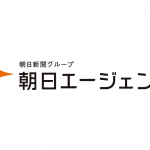海賊サイトにおける広告掲載についてー米国調査よりー
Google, Openx, Yahoo and Quantcast are among the top ten ad networks to be placing the most ads on copyright-infringing sites, according to the University of Southern California’s Annenberg Innovation Lab Transparency report.
The findings mark the first in a series of monthly reports due to be released by the University’s Innovation Lab, showing which online ad networks are placing the most ads on pirated sites, and later will expand to include the top ten brands inadvertently appearing on such sites as a result.
The Annenberg Innovation Lab research study was revealed last November by Jonathan Taplin (pictured), director of the University of South California Annenberg innovation Lab and the producer behind Martin Scorsese’s first major motion picture Mean Streets.
The aim of the report is to shame brands and their ad networks away from backing piracy entertainment sites and in doing so reduce the amount of advertising spend that goes to pirate movie and music sites globally.
The top ten ad networks placing the most ads to Pirate sites are:
1. Openx
2. Google (including Double Click)
3. Exoclick
4. Sumotorrent
5. Propellerads
6. Yahoo (including Right Media)
7. Quantcast
8. Media Shakers
9. Yesads
10. Infolinks
The list of top infringing sites was compiled using the Google Transparency Report of domains with the most DMCA Takedown requests.
A recent report, The Six Business Models of Copyright Infringement funded by Google and PRS for Music on Brands, investigated ad networks and their support of the major pirate movie and music sites around the world and found that advertising financed 86 per cent of the P2P search sites that feature illegally distributed content.
This indicates many major brands are unaware they are a key source of funds for the piracy industry and it is the goal of this transparency report to aid in helping these brands steer their ad dollars away from sites that exploit film, TV and music artists for what appears to be criminal gain, according to the Annenberg University Innovation Lab.
The report, which will name the top offenders on a monthly basis, was compiled from multiple sources and will identify the top ten ad networks that place the most ads on pirate sites, using a robot that scrapes the ad network HTML identifier off each ad.
Taplin said, “Large pirate sites distribute illegal content and continue to steal trademarked, copyrighted content and siphon millions of dollars away from the creative community, making it much harder for artists to make a living. We do not believe that government regulation alone is the answer to the piracy problem, but rather that the self-regulation of major sectors like the online advertising industry could make it harder for the ‘Kim Dotcom’s’ of the world to unfairly exploit artists. We look forward to working with advertising agencies and networks in the coming months to address this issue.”
A Google spokeswoman said, “We have not seen a copy of this report and don’t know the methodology, but to the extent it suggests that Google ads are a major source of funds for major pirate sites, we believe it is mistaken. Over the past several years, we’ve taken a leadership role in this fight, partnering with industry organisations to cut off the flow of money to piracy sites, as well as investing significant time and money to keep copyright-infringing content out of our network. The complexity of online advertising has led some to conclude, incorrectly, that the mere presence of any Google code on a site means financial support from Google.”
The news follows other developments in the UK market aimed at cracking down on the amount of revenues generated by illegal sites. The Drum understands the City Police is working with copyright infringement bodies including the Federation Against Copyright Theft (FACT) to create a list of 100 illegal sites
The online ad industry is keenly awaiting the list, which, once released, will help brands and agencies safeguard against appearing on such sites inadvertently and therefore cutting down on revenue generated by such sites.
Taplin spoke to The Drum last year about his reasons and hopes in creating the monthly listwhile attending the Monaco Media Forum. He explained: “Brands don’t want to be associated with supporting piracy, they have no interest in that whatsoever because the ads on those sites are so cheap they slip below the radar. But the total amount of money flowing into it is really rather astonishing. Last year Google had to surrender to the US Government $500m for ads that they had been promoting on illegal Canadian prescription pharmacy sites. If it was $500m for drug ads, think how much there will be surrounding movies, video games – it boggles the mind.”












